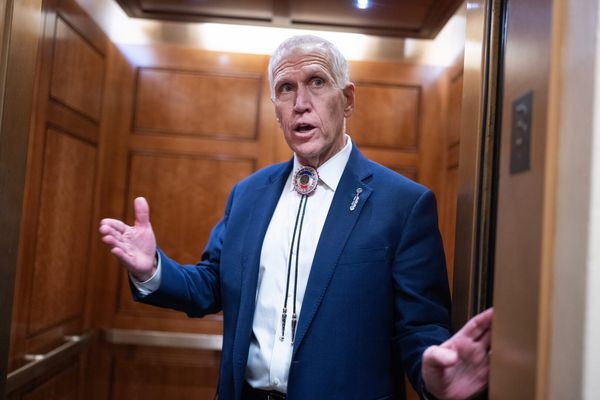
In February 2023 Peter Dutton told the first joint Coalition party room of the year that the Liberals and Nationals were the “parties of the Australian working class”.
Much like the kid who gives himself a nickname, it was hard to take this self-identification seriously. But it’s worth paying attention to as a statement of Dutton’s intent, if not as a description of reality.
After losing government and a swag of blue-ribbon Liberal seats, the opposition increasingly looks to regional and outer urban areas as key to their path back: places such as Lyons in Tasmania, McEwen, north of Melbourne, and the Hunter Valley in New South Wales.
The class politics of Dutton’s internal target seat list helps explain the wobbles we’ve seen on the Coalition side since Labor unveiled its bold plan to halve the legislated stage-three tax cuts for high-income earners to pay for bigger cuts for taxpayers earning less than $146,486.
The Coalition rowed out so hard against Labor’s new policy that a softening of its opposition to more generous cuts for low- and middle-income earners seemed inevitable.
The softening began last week with the deputy Liberal leader, Sussan Ley, clarifying she had not intended to pledge to repeal Labor’s plan if the Coalition were elected.
It continued this week with an inconclusive shadow cabinet meeting producing the vague line that the Liberals and Nationals are the parties of lower tax.
Although several Backbenchers are now openly saying the Coalition should not stand in the way of Labor’s bill, others in the party, like Julian Leeser, are pushing back. Dutton says he doesn’t want to take money off anyone.
The Nationals’ leader, David Littleproud, came closest to articulating what all this might mean in terms of parliamentary votes and future commitments.
He told Sky News on Monday that the Australian people had asked parliament to vote “for all three stages” of tax reform, but if Anthony Albanese’s alternative plan “gets through, then obviously we’ll use that as a starting point to take to the Australian people” and will try to “build on” it in future.
That sounds like: an attempted amendment to restore the original centrepiece of stage three, a flat tax bracket from income between $45,000 and $200,000; probably allowing the bill to pass to prevent a scare campaign; but when it does, promise stage three at the next election.
The reason the Coalition is leaving open the option of voting for changes they despise is simple: many of their current and intended voters stand to benefit.
That is the conclusion of analyses by the treasurer’s office and the Australian National University’s Ben Phillips. It stands to reason, given the income profile of working-class outer urban and regional seats.
The Coalition grumbled anonymously that the tax package was “made for Dunkley” – the seat where the major parties will face off on a byelection on 2 March. The average taxpayer in Dunkley will be $478 better off under Labor’s plan than stage three, according to Phillips.
But there is no need to engage in conspiratorial thinking by inferring a link to the byelection. Some 84% of taxpayers are better off in the first year of the new tax package, or 85% in Coalition electorates.
The independent MP Allegra Spender told the National Press Club on Wednesday that even in her electorate of Wentworth – one of the richest in the country – 66% of taxpayers are better off.
Labor has crafted a tax policy that does exactly what it says on the tin: ensures a tax cut for all taxpayers, a less generous cut for some, to pay for a cost of living relief package for middle Australia.
The reason voting against it is such a daunting prospect for the Coalition is that most people earn less than $146,486, roughly double the average income.
Don’t tell that to Littleproud, who suggested an income of $190,000 – which would put the lucky recipient in the top 4% of earners – is “not a lot in this day and age”.
The Liberals do have a point that if tax brackets don’t move, more and more will be captured in the 37% tax bracket over time.
But to get near an electoral majority the Liberals would have to persuade not just the aspirational, who may one day be worse off when their income reaches the threshold, but also the delusional – people who will never make it but vote against their economic self-interest.
Labor faces a similar class problem in reverse. It came to government by winning more university educated professionals on higher incomes, reaping unusual gains in inner-city seats like Reid, Bennelong, Higgins and Tangney.
These are places where the average weekly household income is more than $2,100, compared with the Australian average of $1,750.
Members there expect blowback but think it’s a fight worth having – and a winnable one – because even in the richest parts of the country more taxpayers are better off.
Before Labor announced its broken promise, Dutton warned that messing with stage-three tax cuts would end Albanese’s prime ministership.
But the generosity of the alternative Labor has crafted seems already to have put Dutton on the back foot.
The pretence of the Coalition being defenders of the working class will be impossible to sustain if the Liberal and National parties oppose tax relief for those they claim to represent.







